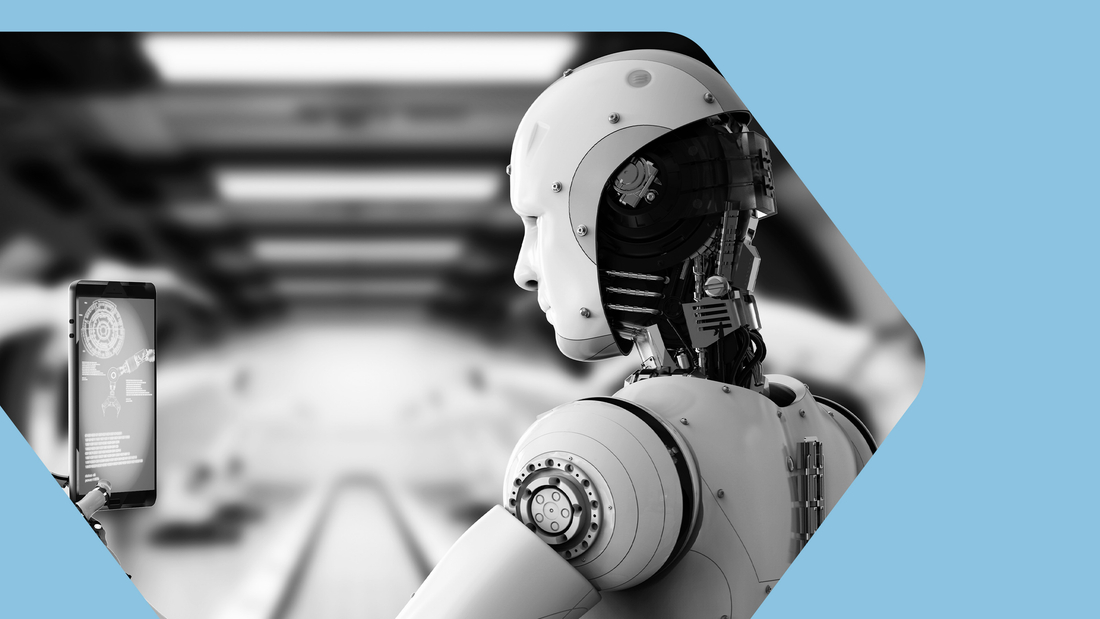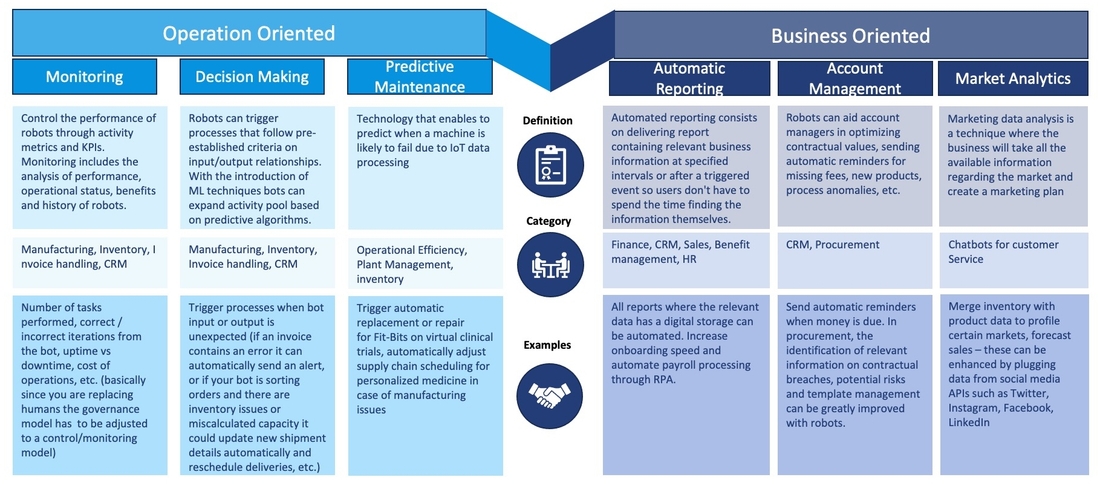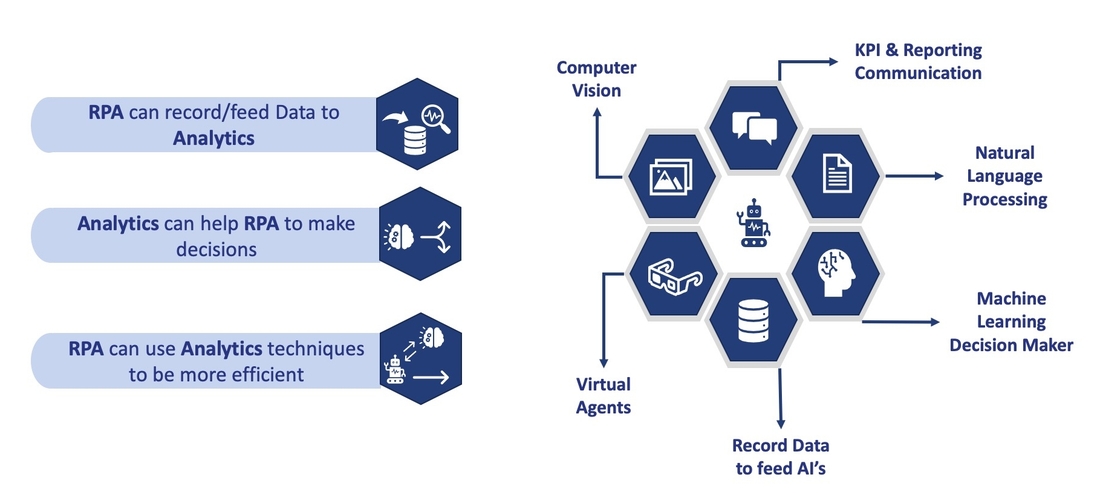Digital transformation through RPA (Part 2)
This article is part two of a multiple-part series. Check part one here.

One step forward in the digital revolution: RPA & Analytics
Analytics is a field that has seen incredible growth over the last decade due to the data revolution. Every industry is now producing unparalleled amounts of data, and the key-players are always seeking ways to capitalize on it. We expect that the combination of RPA and Analytics will be a crucial driver for companies to stay ahead of their competitors. Combining analytics services with RPA enables companies to streamline, standardize, and have a higher level of control over their operations and business processes, enhancing monitoring, decision-making, reporting, and managing capabilities. RPA also provides a bridge between analytics information and functional processes. It can improve master data. It can also support data-driven organizations' complexity by establishing the process pipelines that coordinate analytics services and capabilities.

RPA can record/feed Data to Analytics
Every AI/ML application needs a lot of data that companies don’t always have. Sometimes, because it’s hard to get or it consumes a lot of resources and time.
It is where RPA comes into the picture. Bots (automations) can be programmed to gather data from websites (external data sources like weather, events, social media, news), PDFs, Excel files, data from IoT (Internet of Things). They even can record data from the processes they are running, such as the time it takes to open a specific website or log the chat exchanged with the customer. All this data can be used to gather insights from the business, and create ML applications that can classify customers, predict bot utilization and performance, use external data to understand peak orders, and so much more.
For this data to be useful, it’s essential to have data governance in practice so that it can provide the insights required by the key-users.
Analytics can help RPA to make decisions
After recording all that data and creating AI/ML applications, the bot can use those insights to automate decision making. It will enable the bot to make “smarter” decisions and automate processes otherwise performed by humans.
For example, we can have ML models that predict when a specific tool will fail, and then, before it breaks, tell the bot to order a new one and create the ticket to replace it. It’s possible to have AI/ML applications that segment customers by their orders and interactions with the company (chatbot, emails) and use this information to decide the best way to communicate back to the customer, or even determine which campaigns to create for each customer segment.
All those use cases need to have AI/ML teams with their resources and tools, and close communications with the RPA team to create the right machine learning models to enable the RPA bots.
RPA can use Analytics techniques to be more efficient
Nowadays, most of the leading RPA applications have AI/ML tools built-in. To optimize this technology's potential, we need to understand how these tools can improve the bots and which tools are more relevant for each use case.
One of the most-used AI tools is OCR (Optical Character Recognition), which is enabled by Computer Vision techniques. It is commonly used to extract information from handwritten text, scanned documents, or PDF objects without the plain text. This tool can be combined with NLP techniques to obtain insights like Document classification, gather specific fields (invoice number, signature, supplier), or get context from the document – importance of the document; whether or not it's an outlier and determine a list of people involved. Computer Vision can also identify objects in images (e.g., identify profile pictures, and remove them to anonymize data or get context from images to improve document classification).
Other useful NLP techniques can also improve the bot decision. Sentimental Analysis can rank customer satisfaction based on comments, chat messages, or other feedback formats. Entity Recognition can extract person names, number plates, and remove them and replace them with custom labels.
These techniques can often be already part of the RPA tool. Therefore, it's essential to understand all of them and how they can be used before choosing the platform for business automation.

Conclusion
A lot of companies that already have RPA are starting to ask how they can take the next step and improve their bots to be “smarter”. Understanding AI/ML is critical to make the right decisions, choosing the correct use cases, and the right tools.
At Tenthpin, we have been designing a vision of how it should be done to achieve the best results. Having knowledge of AI/ML and joining it with Business Process know-how is the key to success in the next step.
Stay up to date with the latest #Lifeattenthpin #LifeSciences #Pharma #MedDevices #Biotech #Digitalforlife #Thoughtleadership #Medical Technology #AnimalHealth news by following us on Instagram #LifeAtTenthpin Facebook Tenthpin and our Tenthpin LinkedIn corporate page.

